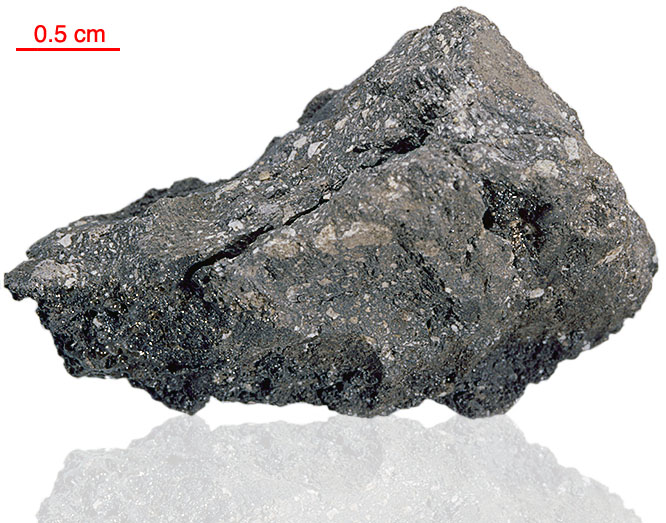
Fact sheet
76545 and its companions 76546, 76547, 76548 and 76549 were collected from a rake sample. They all look alike and have not been extensively studied. In summary these samples consist of lots of small white clasts set in black glass matrix. Our thin section shows one larger anorthosite clast (see rotation 1) and many smaller mineral and lithic clasts. Rotation 2 also shows some broken orange glass beads - one of which is partially devitrified.
The sample weighed 7.7 grams before analysis and has not been dated.
Further details of this and other Apollo samples are here: http://curator.jsc.nasa.gov/lunar/
Note: this section is slightly thick.
Apollo 17, the final manned landing mission, had two objectives: to obtain samples of ancient rocks from the lunar highlands and to look for evidence of younger volcanic activity on the valley floor.
This small Collection contains material deriving from both periods, including igneous rocks around 4.3 billion years old from the lunar highlands as well as younger volcanic samples dating from about 3.6 billion years ago.
Apollo 17 was launched on 7 December 1972.






